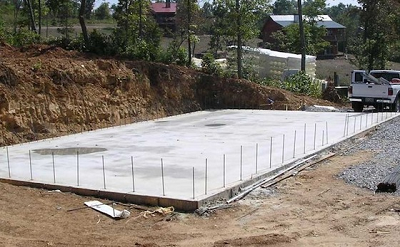When you are planning for a foundation, there are several choices to be made. Once you decide on concrete, you have three primary options to pick from. Getting the basic information about each will help to make it a bit easier to choose the one that is right for you.
T-Shaped Foundation
This is a traditional type of concrete foundation. If you live where the ground freezes at any part of the year, this is a solid choice. The footing of this foundation goes below the frost line, helping to protect it when the weather gets cold. The wall goes on top, but it is not as wide as the footing. This ensure that at the foundation’s base, there is a little extra support. Once this foundation is put into place, it is important that it is able to cure before the walls are constructed. Then, between the walls, the slab is poured.
Slab-On-Grade Foundation
This is pretty much the same as the name implies. It is several inches thick, but it is a single layer of concrete. At the edges, it will be a bit thicker to ensure that the footing is strong. At the thickened edge, the contractor will insert reinforcing rods to ensure even greater strength. To improve drainage so that the foundation lasts for a long period of time, the concrete is usually poured onto a bed of crushed gravel. Cracking risk is decreased by utilizing a wire mesh inside the concrete.
This type of foundation is best when you live in an area where the ground never freezes. However, it can be used in freezing areas as well as long as it is properly adapted with insulation. Just ensure that the insulation is sufficient and applied properly.
Frost Protected Foundation
You will need a heated structure for this type of foundation to work. The contractor will utilize polystyrene insulation and it will be applied in two sheets. It is important that each layer of this insulation is rigid. One of the sheets of this insulation will go on top of a bed of gravel. This will be placed by the wall at the base. The second sheet of insulation goes outside of the wall that is associated with the foundation. Both of these sheets work together to help in preventing freezing. This is crucial if you are building a foundation in an area where frost can occur at any time of the year.
The insulation will work to hold feat that comes from the structure. This is held below the footings in the ground. From the edge of the slab, this insulation will also prevent heat loss. Overall, the heat will ensure that the ground that is surrounding the footings remains above freezing.
Think about the property you are looking to build and compare what is needed to the benefits of the different concrete foundation types. Once you settle on a type of concrete foundation, you want to ensure that a reputable contractor does the work to build it.


